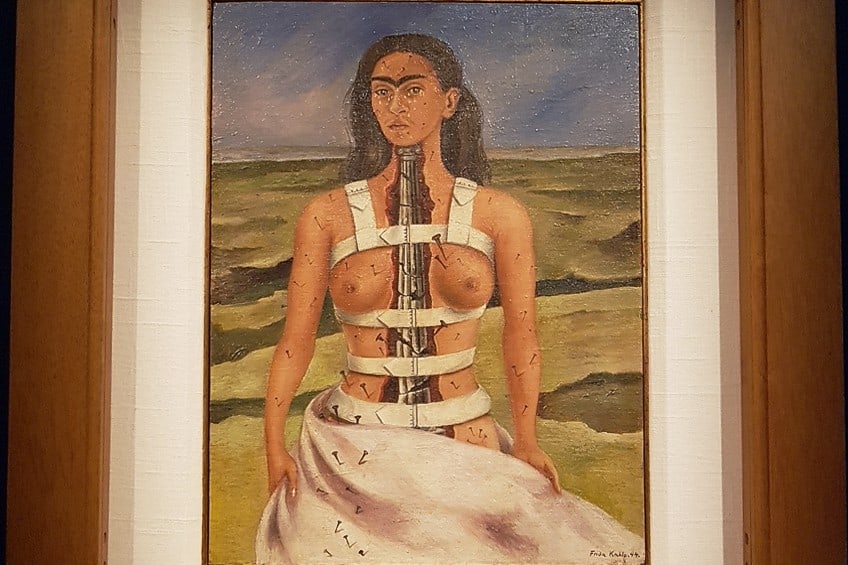“The Broken Column” by Frida Kahlo – A Look at La Columna Rota
Frida Kahlo’s art has had a major impact on art history and continues to be celebrated and studied to this day. She is considered one of the most important artists of the 20th century, and her work continues to inspire contemporary artists across the globe. To understand more about this prolific artist’s work, context, and process, we will look at The Broken Column painting (its original title is La Columna Rota). This naked braces painting of Frida is one of her most striking paintings of broken woman art that expresses her anguishing physical pain, as well as her emotional suffering.
Artist Abstract: Who Was Frida Kahlo?
Frida Kahlo (1907 – 1954) was a Mexican painter known for her powerful, symbolic self-portraits that often depicted her physical and emotional pain. Born in 1907 in Coyoacán, Mexico, Kahlo spent her childhood and early adulthood in Mexico City. She came from a mixed heritage, her father was German and her mother was Mexican, which played a role in her later art and life.
As a child, Kahlo was plagued by health issues, including polio, which left her with a limp. In her teens, she was severely injured in a bus accident and spent a year recovering in a full-body cast.
During this time, she began to experiment with art as a way to pass the time and express her emotions. She took up painting and drawing and developed her skills over the next several years. In the early 1920s, Kahlo began to pursue her art more seriously and studied at the National Preparatory School in Mexico City, where she met and later married the famous muralist, Diego Rivera. Even though Rivera was much older and already a well-established artist, the two were deeply in love and their relationship was a major influence on Kahlo’s art.

Kahlo’s early works were heavily influenced by the Mexican muralists and the indigenous culture of her home country. She began to develop her own unique style and voice with the creation of self-portraits, which would become the primary focus of her work. Her famous paintings include such as The Two Fridas (1939), The Broken Column (1944), The Wounded Deer (1946), The Suicide of Dorothy Hale (1938), and The Dream (1940) depict her physical and emotional pain, her relationship with Rivera, and the cultural and political climate of Mexico in the 1930s and 1940s.
The Broken Column by Frida Kahlo in Context
| Date | 1944 |
| Medium | Oil on masonite |
| Type of Painting | Self-portrait |
| Movement | Surrealism and symbolism |
| Dimensions (cm) | 39.8 × 30.6 |
| Location | Museo Dolores Olmedo, Xochimilco, Mexico City, Mexico |
Frida Kahlo’s The Broken Column is one of her most powerful and emotionally charged self-portraits. Created in 1944, the painting is a masterful example of Kahlo’s ability to use her own experiences and emotions to create powerful, symbolic works of art. Before we do an in-depth visual analysis of this painting, let us look at the painting in the context of Kahlo’s career and the socio-political environment it was created in.
The Broken Column Painting in Context of Frida Kahlo’s Career
The Broken Column painting is one of Kahlo’s most significant works and it was created during a particularly difficult period in her life. At the time, she was suffering from chronic pain and her relationship with Rivera was on the rocks. The painting serves as a powerful expression of the emotional turmoil she was experiencing and a testament to her strength and resilience in the face of adversity.
Throughout her career, Kahlo’s paintings often dealt with themes of physical and emotional anguish and issues of identity, gender, and class.
Her work has been seen as feminist and politically charged, and she is often celebrated as a feminist icon. In addition to her exploration of these themes, her self-portraits also had elements of surrealism, featuring dreamlike and fantastical imagery. This is especially true in The Broken Column painting, which can be seen as a surreal dream of her present physical state and emotional turmoil. Her painting was not only a reflection of her personal experience but also a commentary on the larger political and social climate of Mexico during this time.
A Brief Mexican Socio-Historical Overview of La Columna Rota
The Broken Column by Frida Kahlo is a powerful self-portrait created during a turbulent period in Mexican history. At the time, Mexico was in the midst of political and social change, with a growing sense of nationalism and anti-colonial sentiment. These societal and political changes greatly influenced Kahlo’s work, and The Broken Column can be seen as a reflection of the larger political and social climate in which it was created.
In Mexico during this time, there was a growing desire to reclaim the country’s indigenous heritage. Kahlo’s work was heavily influenced by Mexican muralism and indigenous culture, and this is evident in the symbolic elements of The Broken Column.
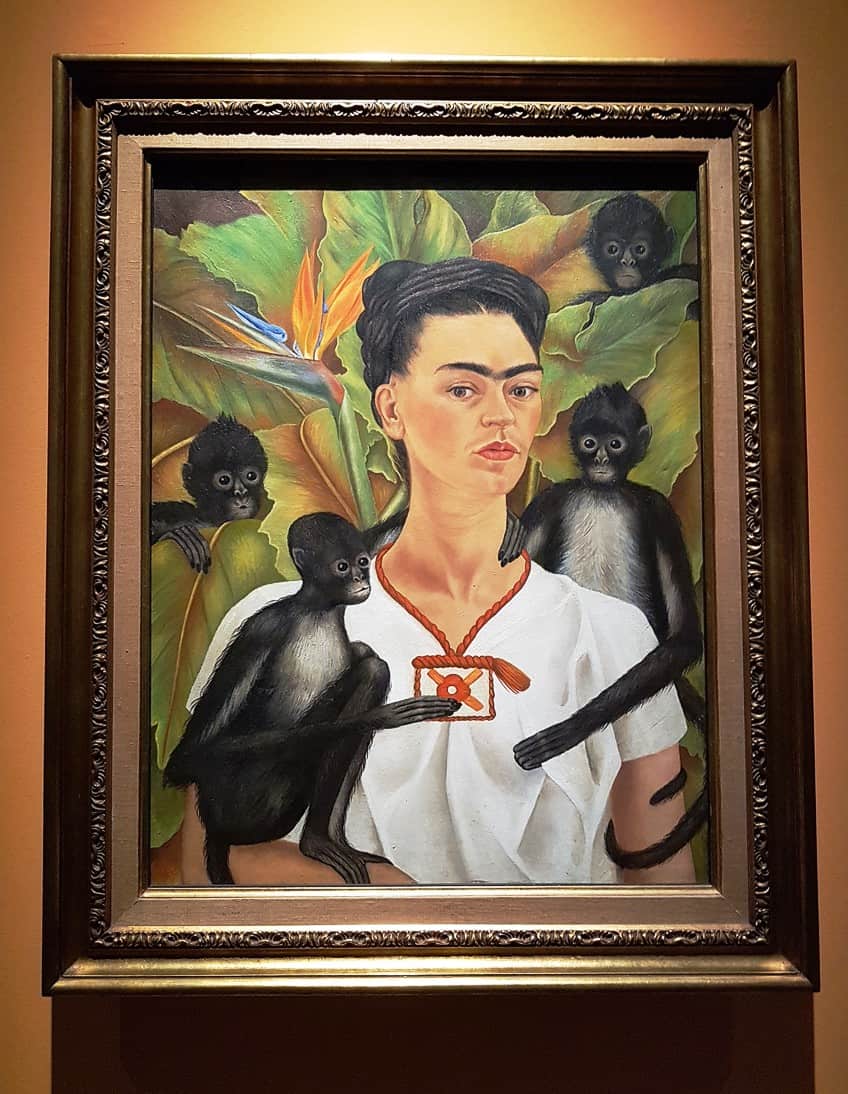
The broken pillar or broken woman art is not only a metaphor for the physical and emotional pain she suffered but also a symbol of the crumbling of Mexico’s past and a desire to rebuild a stronger and more unified nation. Kahlo’s work was also deeply political and feminist, and The Broken Column is no exception. The painting can be seen as a commentary on the way women’s bodies and emotions were often considered secondary to the nation’s needs during this time. Her nudity and the vulnerability that it represents show the sacrifice and strength of women who were asked to endure so much.
A Brief Western Socio-Historical Overview of La Columna Rota
In the western world, where Kahlo’s work was exhibited, the painting was often viewed through the lens of feminist art, and it was celebrated for its exploration of women’s experiences and emotions. The influence of Mexican muralism and indigenous culture in her work also made it stand out from the dominant Western art styles of the time.
At the time it was first exhibited in America, the United States was in the midst of World War II, and the country was focused on the war effort.
The government had implemented strict rationing of goods and resources, and the economy was geared towards supporting the military. There was a strong sense of national unity and patriotism, as the country rallied together to defeat the Axis powers. Societally, America was undergoing significant changes as well. The war had led to a large number of women entering the workforce and taking on jobs that had traditionally been held by men. Additionally, a large number of African Americans and other minorities had migrated to the cities for war-related jobs, leading to increased racial tension in many urban areas.
The art world during this time was also heavily influenced by the war. Many artists were commissioned to create works that supported the war effort and boosted morale. Even though Frida Kahlo’s work did not depict the war, the work reflected her personal experiences and physical and emotional pain.
These themes resonated with the art-viewing public at that stage even though her focus was a little at odds with the dominant narrative of the time.
Visual Analysis of The Broken Column by Frida Kahlo
The Broken Column by Frida Kahlo is a striking self-portrait that showcases her mastery of composition. In this section of the article, we will do an in-depth visual analysis touching on composition, subject matter, color use, texture, perspective, and symbolism.
A Brief Compositional Overview
The painting depicts Kahlo standing naked, braces wrapping her body. Her spine is painted as a broken column, which is a metaphor for the physical and emotional pain she suffered throughout her life – specifically the continuous back pain she suffered. Her body is punctured with nails or pins.
Kahlo’s figure fills the majority of the canvas, drawing the viewer’s attention to her face and her expressive eyes. She is crying and it seems like she is so defeated or determined by the pain that she is simply allowing the tears to flow over her cheeks.
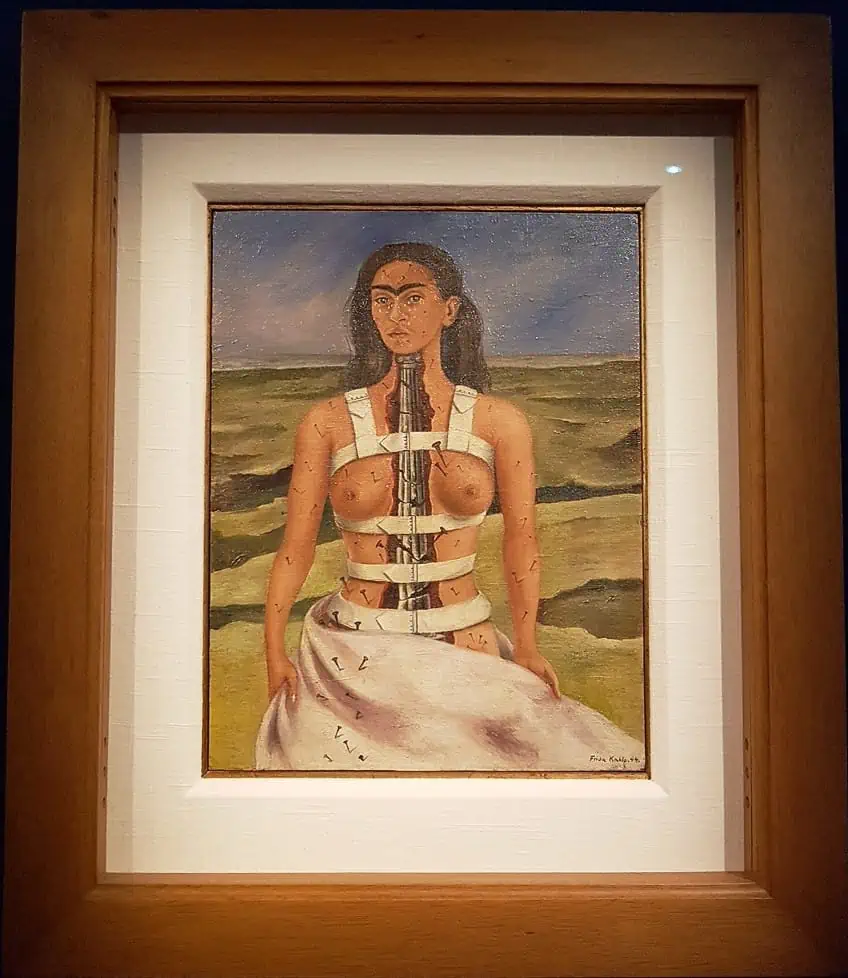
Something in her posture creates the feeling that Kahlo is a strong and resolute figure, standing tall around the broken column, with a determined expression on her face. The broken pieces of the column are held together with bandages and the back brace, which is a reference to the many surgeries Kahlo underwent to try and alleviate her pain. The broken column serves as a background for her figure, contrasting with her nudity and vulnerability, emphasizing the starkness of her physical condition.
Subject Matter
The subject matter of The Broken Column painting is highly personal and reflects Kahlo’s ongoing struggles with chronic pain and her tumultuous relationship with her husband Diego Rivera. The painting is a self-portrait in which Kahlo presents herself as strong, resolute, and determined, while still acknowledging the pain and fragility of her body.
The subject matter of the painting can, therefore, be read from this personal perspective, but could also be interpreted to speak to the power of women in the face of adversity in general.
Color
Kahlo’s use of color in The Broken Column painting is intense and evocative. The cool gray tones of the column contrast starkly with the warm tones of Kahlo’s skin, creating a striking visual effect. The use of red, yellow, and blue throughout the painting, such as the red of her open body, creates an emotional intensity that is hard to ignore.
The colors help to convey the emotional turmoil and pain that Kahlo was experiencing at the time of the painting as they contrast starkly with each other.
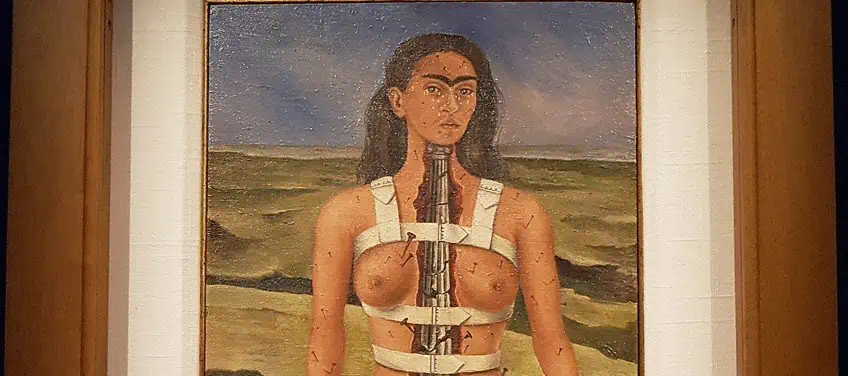
Texture
The texture in The Broken Column painting is thick and heavily impastoed, adding a sense of physicality and tangible presence to the image. The thick paint adds a sense of depth to the work, which is intensified by the use of light and shadow.
Perspective
The perspective in the painting is frontal, allowing the viewer to look straight into the eyes of the artist, making the connection between the viewer and the artist more intimate. The form of the broken column is jagged and irregular, reflecting the fragility and vulnerability of the artist’s body.
Symbolism
In addition to her exploration of the human condition through her self-portraits, Kahlo’s work also has surrealist elements. Her paintings often feature dreamlike and fantastical imagery, and she was closely associated with the Mexican Surrealist movement. Her work has also been seen as symbolic and deeply political, touching on themes of identity, gender, and class, and she became a feminist icon.
The symbolism in The Broken Column by Frida Kahlo is rich and varied. The broken column symbolizes the fractures in her spine caused by a bus accident in her youth, as well as the emotional pain she felt from her tumultuous relationship with her husband Diego Rivera.

The broken column also symbolizes the crumbling of her physical body and her emotional state. The bandage holding it together symbolizes the many surgeries Kahlo underwent. The nudity of the artist represents the vulnerability and sacrifices she had to make in her life. The artist and subject of the painting are staring directly at the viewer, confronting us with her pain. The strangeness of the desolate landscape in which she is standing further centers her pain and makes feeling for her unavoidable. She is almost presenting her wounds and uneasiness as if she is a martyr.
Why Is Frida’s The Broken Column So Influential?
The Broken Column by Frida Kahlo was first exhibited in 1944, at the Galería de Arte Mexicano in Mexico City. The painting was part of a solo exhibition of Kahlo’s work and it was received with great interest and acclaim by the public. At the time, Kahlo’s work was not widely known outside of Mexico, but this exhibition helped to establish her as one of the most important artists of the 20th century.
One of the first art critics to write about The Broken Column was the Mexican art historian, Pedro Ángel Palazuelos (1911 – 1980).
In an article published in the Mexican newspaper El Universal, he praised Kahlo’s use of symbolism and her ability to convey the emotional turmoil she was experiencing. He wrote, “With this painting, Frida Kahlo makes us feel the physical and emotional pain she has experienced, without ever resorting to sentimentalism.”
Another art critic, Carlos Monsiváis (1938 – 2010), also wrote about the painting in 1944, in the magazine Plural. He wrote, “In The Broken Column, Frida Kahlo paints the most painful, intimate, and frank self-portrait she ever made.” He also praised the use of the broken column as a metaphor for physical pain and emphasized how the painting captured the emotional turmoil of the period in Mexico and Kahlo’s personal experience. Some of the American critics that saw the painting when it was exhibited in the US later, also highlighted the powerful symbolism and the emotional intensity of the painting.
American art critic Clement Greenberg (1909 – 1994) for example, praised the painting for its use of symbolism and its ability to convey the emotional turmoil of the artist.
Frida Kahlo’s Influence on Art History
Frida Kahlo’s The Broken Column is considered one of her most powerful and emotionally charged self-portraits, and it has had a profound influence on the art that followed. One of the most significant ways in which The Broken Column painting has influenced the art that followed is through its use of self-portraiture.
The Power of the Self-Portrait
Kahlo’s self-portraits are deeply personal, and they explore themes of physical and emotional pain, as well as issues of identity, gender, and class. Her work has been celebrated for its feminist perspective and its ability to empower women by giving them a voice.
The Broken Column painting is considered one of the most powerful self-portraits of the 20th century, and it has served as an inspiration for generations of female artists and broken woman art that have followed in Kahlo’s footsteps.
Symbolism and Metaphors in Art
The painting has also had a profound impact on the use of symbolism and metaphor in art. The broken column serves as a metaphor for the physical and emotional pain that Kahlo suffered throughout her life. This powerful symbol has been used by other artists as a way to explore their own experiences of pain and trauma.
The use of symbolism and metaphor in The Broken Column has also been seen as an influence on the Surrealist movement, as Kahlo’s work often features dreamlike and unimaginable imagery.
Provocative Technical Decisions
In terms of color and composition, the painting is unique and provocative, and its influence can be seen in later artists who used similar techniques to create powerful, emotional works of art. The use of bright colors and thick, heavily impastoed texture are hallmarks of Kahlo’s style and are often cited as an influence on the work of other artists.
The painting’s composition, with the frontal view and emphasis on the eyes of the artist, has been influential to other self-portrait painters, creating an intimacy between the viewer and the artist, making the connection stronger, and allowing the viewer to look straight into the eyes of the artist.
Frida Kahlo’s Impact on Today’s Art Audience
Besides the fact that Frida Kahlo influenced other artists, she is still very famous today among art lovers and gallery-goers. She is considered a significant artist today for a variety of reasons. Let us look at a few reasons why she has been held in such high esteem
The Emotional Power of Her Work
Firstly, her work is widely recognized for its emotional power and ability to convey deeply personal and often painful experiences. Her self-portraits are considered some of the most powerful and emotionally charged of the 20th century, and they continue to resonate with audiences today.
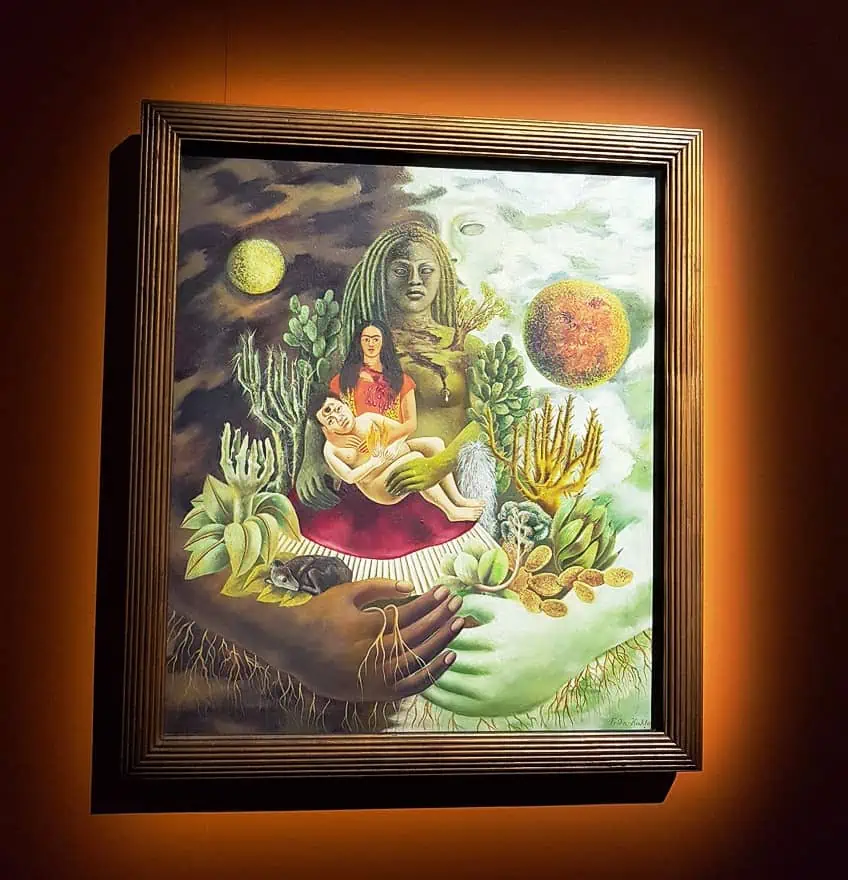
Frida Kahlo’s Technical Proficiency
Secondly, her art is also celebrated for its technical proficiency, especially in terms of color and composition. Her use of bright colors and thick, heavily impastoed texture are hallmarks of her style and have been influential in the work of many painters that followed.
A Sad and Intriguing Life
Lastly, her life story, her struggles, and her perseverance have also made her a significant figure in art history. Her overcoming of physical and emotional pain, her continuous fight for her own beliefs, and her representation of marginalized groups made her an icon of resistance and perseverance. All of these elements contribute to Frida Kahlo’s continued relevance and importance as an artist today.
Her art continues to inspire contemporary artists across the globe, and her legacy is celebrated in exhibitions, retrospectives, and publications of her work worldwide.
The Broken Column (or La Columna Rota) is a masterful use of color, self-expression, emotional pain, and political and social issues that are still resonating with the public. The highly emotional painting, which grabbed the attention of the public and art critics when it was first exhibited, is an excellent technical example of why Frida Kahlo is still celebrated today.
Frequently Asked Questions
How Was The Broken Column by Frida Kahlo Received?
Frida Kahlo’s The Broken Column (1944) was first exhibited in 1944, and it was received with great interest and acclaim by the public and art critics. Pedro Ángel Palazuelos, Carlos Monsiváis, and Clement Greenberg were among the first critics to write about the painting, praising its use of symbolism and its ability to convey the emotional turmoil that Kahlo was experiencing at the time. Their critiques helped to establish Kahlo as one of the most important artists of the 20th century.
What Makes The Broken Column by Frida Kahlo So Significant?
Frida Kahlo’s The Broken Column is considered one of the most powerful self-portraits of the 20th century, and it has had a profound influence on the art that followed. The painting’s use of self-portraiture, symbolism and metaphor, color, and composition, have served as an inspiration for generations of artists. Its influence can be seen in the work of female artists, in the use of symbolism and metaphor, and in the style of color and composition of many painters that followed.
Is Frida Kahlo a Feminist Artist?
Kahlo’s art is also highly symbolic and political, and often reflects themes of identity, gender, and class. Her work is celebrated for its feminist perspective and its ability to empower women by giving them a voice. Her paintings not only reflect her personal experiences, but also the political and social climate of Mexico during the time they were created, making them important historical documents.
Nicolene Burger, a South African multimedia artist and creative consultant, specializes in oil painting and performance art. She earned her BA in Visual Arts from Stellenbosch University in 2017. Nicolene’s artistic journey includes exhibitions in South Korea, participation in the 2019 ICA Live Art Workshop, and solo exhibitions. She is currently pursuing a practice-based master’s degree in theater and performance. Nicolene focuses on fostering sustainable creative practices and offers coaching sessions for fellow artists, emphasizing the profound communicative power of art for healing and connection. Nicolene writes blog posts on art history for artfilemagazine with a focus on famous artists and contemporary art.
Learn more about Nicolene Burger and about us.
Cite this Article
Nicolene, Burger, ““The Broken Column” by Frida Kahlo – A Look at La Columna Rota.” artfilemagazine – Your Online Art Source. March 6, 2023. URL: https://artfilemagazine.com/the-broken-column-by-frida-kahlo/
Burger, N. (2023, 6 March). “The Broken Column” by Frida Kahlo – A Look at La Columna Rota. artfilemagazine – Your Online Art Source. https://artfilemagazine.com/the-broken-column-by-frida-kahlo/
Burger, Nicolene. ““The Broken Column” by Frida Kahlo – A Look at La Columna Rota.” artfilemagazine – Your Online Art Source, March 6, 2023. https://artfilemagazine.com/the-broken-column-by-frida-kahlo/.


